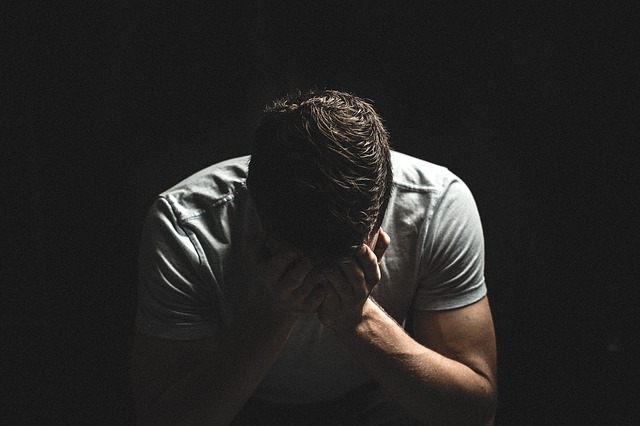It happened again. The office phones had just transitioned to the answering service for the evening when a call came through from a patient who had completed an accelerated opioid detox (not to be confused with ultra-rapid (anesthesia-using), hospital-based detox) three days earlier.
Jimmy (not his real name) is a 40-something, big, strong, smart man in the construction business. He works on high-end projects in the Richmond area and he was not feeling good.
“I’ve got no energy. I’m dragging myself to work, but I don’t remember ever feeling this tired. Is there anything you can prescribe or anything I can take over the counter?” He was almost pleading.
Low Energy After Opioid Detox
One of the calls we field the most and one of the topics we address during the detox is how a person will feel after they complete their own rapid detox off opioids. Whether the opioid is heroin, fentanyl, oxycodone, hydromorphone, oxymorphone, hydrocodone, tramadol, (increasingly) kratom, methadone, or buprenorphine (to name a few), it is simply going to take some time before the brain’s dopamine is restored and the energy returns.
Low energy is a transient phase. Knowing that you’re working through a phase of PAWS can help to keep you motivated during recovery.
Opioid Detox Timeline Using the Coleman Method
Detoxing from opioids with the Coleman Method has a 98% success rate and can be completed in as few as 3 days. The exact number of detox days are dependent upon the substance you are detoxing from, your medical history, and your specific situation.
Following a detox, some may experience Post-Acute Withdrawal Syndrome or PAWS. Although I can’t be specific about each particular person’s recovery time, a patient can usually count on the toughest phase to last from 2 weeks to 2 months. During this time, lack of energy, appetite, and sleep are the norm. I base this statement on my almost 15 years of working with people recovering from opioid dependence and addiction.
High anxiety, low energy, and being irritable can feel overwhelming as the brain and body work hard to reach a healthy balance. Certain memories can trigger these feelings. Many report this phase feels like being on a roller coaster of emotions. It may not feel like it, but these feelings are actually a healthy indicator that the body is returning to its natural state before it was overcome with disease of addiction.
UNDERSTANDING ACCELERATED OPIOID DETOX
Patients who continue to follow up with us and stay on naltrexone, one of the three evidence-based options for Medication-Assisted Treatment (MAT) for Opioid Use Disorder, continue to feel better and better, with improvements in energy, sleep, appetite, and anxiety.
Boosting Low Energy IS Physical and Emotional
I spent a few minutes reminding Jimmy about the image we had looked at together of how the brain’s dopamine is depleted when opioids are stopped after extensive use. I suggested he stay incredibly well hydrated and use medication we provided to help him sleep in the short term.
I also suggested—with a little hesitation—because I guess I have some stereotypes about big strong construction workers journaling, that Jimmy keep written track of a few markers of his progress, both physically and emotionally. Things like:
- Creating good sleep hygiene habits: Sticking to a sleep routine that allows you to get extra rest is extremely helpful in recovering from a substance use disorder.
- Healthy Food: Eating something good for the body and not overly processed, high fat and carb food. The body has to work hard to process foods with high fat content, which can lead to even lower energy levels. Replenishing the body with crucial vitamins will help with a smoother recovery.
- Drink water: Chronic dehydration is a common occurrence amongst those with use disorders as they have been neglecting their body’s needs. Drinking enough water helps to keep the body functioning at optimal levels especially as the kidney’s work harder to remove extra toxins from the body.
- Doing one thing specifically for recovery: Attend a meeting, read some inspiring recovery literature, connect with a sponsor, listen to a podcast to reinforce the decision to get off opioids. Old thinking patterns become reinforced with the media one surrounds themselves with. It can help to inspire confidence in the choice to stick with recovery by hearing regular messages and stories from sources you respect and wish to be like.
No Cravings After Opioid Detox at the Coleman Institute
The other stereotype Jimmy kind of crushed for me happened when his voice wavered and he told me that we had ‘saved his life’. That ever since he became dependent on opioids, he had been trying to stop using them and nothing else had worked for him. He said he had absolutely no cravings. He couldn’t believe it. This is the power of one's will backed with the medicinal help of Naltrexone. Making the decision to go opioid free is the biggest step.
No bravado, no ego, no machismo…just gratitude and humility.
Perhaps this is why I have never worked in another setting for as long as I have practiced at the Coleman Institute for Addiction Medicine. I am truly touched by my patients every day.
Joan Shepherd, FNP


